
Birth of the heavy cavalry
Transition from the chariot to cavalry passed through the saddle. It was invented earliest known saddle-like equipment were fringed cloths or pads used by Assyrian cavalry around 700 BC. This primitive model was strapped by a girth or surcingle including breast straps and cruppers. With time, saddles became social status symbols, embellishments added with elaborate sewing or leather work, and precious metals and precious wood works, also, infamously, scalps (Scythians).North Iranian Eurasian nomads (Scythians and Saka) created a primitive saddle using a rudimentary frame with two parallel leather cushions and attached girth, with a pommel. It also had a cantle with detachable bone or horn, hardened with leather facings but also leather thongs, and a crupper and breastplate. The animal was often lavishly adorned with fake horns and fantasy contraptions like those found at Pazyryk. Ornamented saddles were found in the Ukok Plateau in Siberia and dated back to 500-400 BC. Ancient saddled of this type were also found with the ancient Armenians, Assyrians, and steppe nomads in general at the time of Ashurnasirpal II. Scythians saddles did nor have a solid tree nor stirrups, but pads for protection and comfort to the rider. The "saddle" had an increase at the front. The Sarmatians, which subdued the Scythians, used a padded treeless early saddle. Hellenistic cavalrymen used a saddle cloth.
 About Nisean Horses
However wooden frame, solid-tree saddles with felt appeared during the Han dynasty (200 BC), whereas the earliest solid-treed saddles mde their way, though nomads invasions, of the "four horn" design made its way to the Romans in the 1st century BC, but still no stirrups at that stage. It is importan also to specify horses themselves were not of the kind we know today; Western European horses and Asian horsese were of separate, small breeds. Large horses only existed in one place, Nisaia, located in the Nisaean plains, at the foot of the southern Zagros range in Iran. It was first used in combat by the Medes, which for long had the monopoly of their trade, even justifying a war from the Assyrians.
About Nisean Horses
However wooden frame, solid-tree saddles with felt appeared during the Han dynasty (200 BC), whereas the earliest solid-treed saddles mde their way, though nomads invasions, of the "four horn" design made its way to the Romans in the 1st century BC, but still no stirrups at that stage. It is importan also to specify horses themselves were not of the kind we know today; Western European horses and Asian horsese were of separate, small breeds. Large horses only existed in one place, Nisaia, located in the Nisaean plains, at the foot of the southern Zagros range in Iran. It was first used in combat by the Medes, which for long had the monopoly of their trade, even justifying a war from the Assyrians.
Neighbouring nomads soon learned to domesticate it, and it was used by the first heavy cavalry of the Persian Armies. The breed was the result of crossings to make the largest possible mount, from a robust forest horse. The heavy cavalry role was soon of a schock cavalry, after horse-archers had "softened" the enemy line; The principle was kept and refined with the cataphracts. Nisaean horses were soon adopted by the nobility of all nomadic peoples, starting with the Scythians, made their way as far west as the Celtic nobility where such horses were also a status symbol. Crossed with local breeds, such mounts soon formed the basis of heavy cavary in the Hellenistic world as well. Imported by the Greeks in Iberia it made the basis of local breeds as well.
Early cataphracts
 Cappodocian cataphracts
Cappodocian cataphracts
It is also true that gradually the chariot faded out of military thinking from 400 BC onwards. Only the Celts, Indians, and some Helenistic eastern powers maintained it in limited use. The first to carry a nobleman or wealthy warrior in and out of a fight, and for the psychological fear factor, whereas the Indians used it as a support for archers, and Pontus or the Seleucid, to disrupt a civilian mob or poorly trained light infantry (so as a police enforcement device). The king of the day was the heavy cavalry: Especially when used by the Macedonians in a combined arms tactics, Heavy cavalry became the hammer, bringing the decisive blow on an army pinned up by the anvil -The phalanx.
However on their way to the east, Macedonian cavalrymen met the colorful and diverse armies of the Persian king of kings. Among its numerous cavalry units a few cataphacts were encountered. It is difficult to pinpoint exactly their origin. It went with the growing aggressiveness of cavalry in warfare. It became self-evident that protection of the rider and horse was to be improved, especially with the king of warfare of the "east". Archery indeed was central to it, and precious nobility riders could not be defeated by a mere lowly footsoldier armed with a bow. Therefore whereas the rider was already armored, the mount became associated in this protection effort. It was quite common to defeat infantry at the time, to spear the mount, making the rider falling, becoming easy prey for foot soldiers.

Armenian and Pathian cataphracts duelling (Angus Mc bride)
Therefore protecting the rider started with a simple device, a chest armor, suspended by girders. It protected the horse frontally, but the sides, rear, head and neck stayed uprotected and could be harmed by arrows. This kind of simple protection stayed very much in favor for heavy cavalry for centuries, but was not comparable to true "cataphacts". The term was found in Greek descriptions around 250-300 BC. "Kata-phraktoi" can be translated accurately as "fully armored" or "enclosed in full armor". It meant not only the rider, buy the horse as well. The easiest way to perform this was to create a "mantle" hinged on the horse's chest and going at the back, down to the croup. The soft mantle was made of heavy canvas, leather or both combined, to strap series of scales. Scale armor was indeed preferred. It is alleged also the use of iron chainmail, but the weight of it could have seriously hampered the horse agility. There are no serious thoughts about this prospect or proof of it. Even in medieval times were knighly heavy cavalry reigned supreme. If used on a horse, it was partial at best.

Parthian cataphract and horse archer (Angus Mc bride)
The Medians are suspected using their finest Nisean horses to be enclosed in armour, carrying their precious noblemen to the battlefield, safe from arrows. Light scales were indeed the best possible protection, but a simple leather mantle offered a good protection as well. If the arrow managed to pierce it, it lost its momentum and could not do much harm to the horse. The very shape of interlocking scales aso provided and all-round, efficient protection, while being light as well. Not only the full protection ofthe horse and rider imposed a particular breed, the Nisean horse, but the latter was to be further selected to produce a stronger breed, able to carry heavy loads and reminiscent of out medieval work horses.

Reliefs in Nimrud, the ancient Assyrian city of king Shalmaneser I in 1300 BC shows depiction of riders with plated-mail shirts of metal scales, to defeat unprotected Aramaeans, Mushki, North Arabian tribes and Babylonian horse archers, however the horse was not protected. The Neo-Assyrian Empire created an integrated unit of heavy lancers, well protected, and they evolved under Sennacherib (705–681 BC) as horse archers/lancers. Later around 500 BC, the Massagetae, Dahae and Saka experimented wth a partial protection and later the head and flanks of the horse were protected by armor as well. This was almost 1000 years before the Roman Empire adopted these. They formed the basis for an elite cavalry unit i the Persian Empire; The Assyrian and Chorasmian also experimented with mailed cavalry.
The Generic Persian asabāra comprised a variety of light and medium cavalry armed with bows and jevelins, but heavyer cavalry as well, armed with lances and axes. Unfortunately Herodotus does not seems to describe a proper cataphract cavalry.
Parthian and Hellenistic cataphracts

Bactrian Agema
It is very clear that the concept of cataphract tended to made its way into the West in around 200 BC. The Sarmatians, at that stage, already had conquered most of former Scythian lands, and the latter were merely either assimilated or settled in the Bosphorus Kingdom, modern Crimea, or refugees in Getic and Dacian territories. The Sarmatians comprise four large "nations" or tribes composed of tens of thousands of families living a pastoralist existence on the immense steppe. The Aorsi, Roxolani, Alanni and Iazyges originated west of Saka lands, and represented the Prokhorovka culture, moving from the southern Urals to the Lower Volga and settled on the northern Pontic steppe, in the 4th–3rd centuries BC.
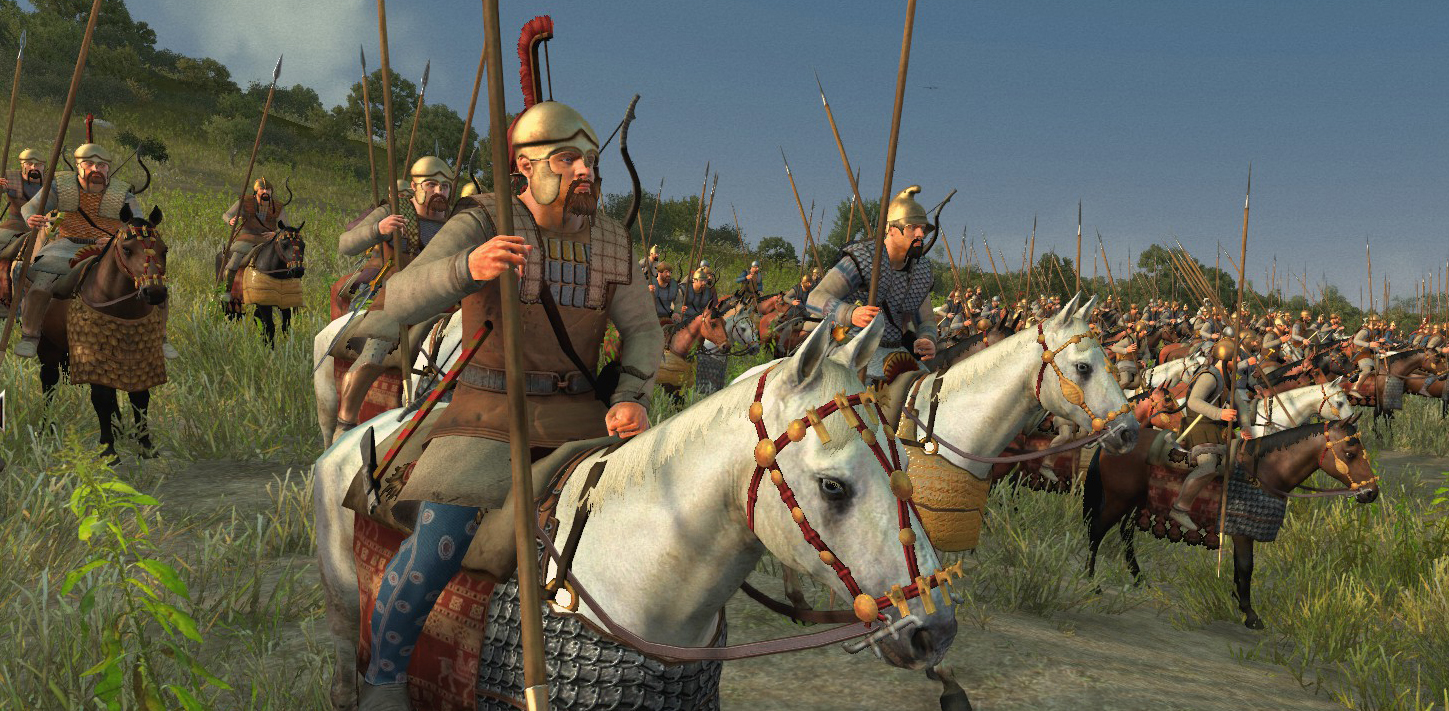
Saka Royal guards
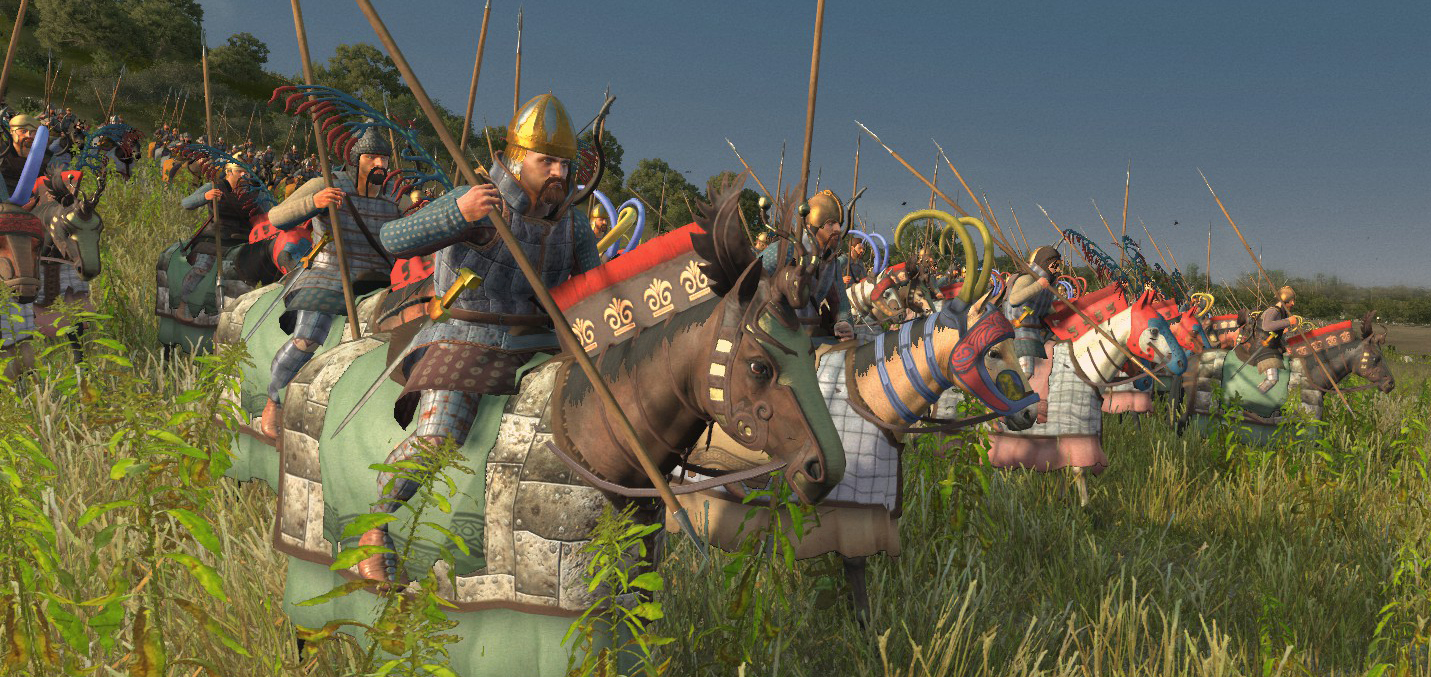
Saka Royal guards
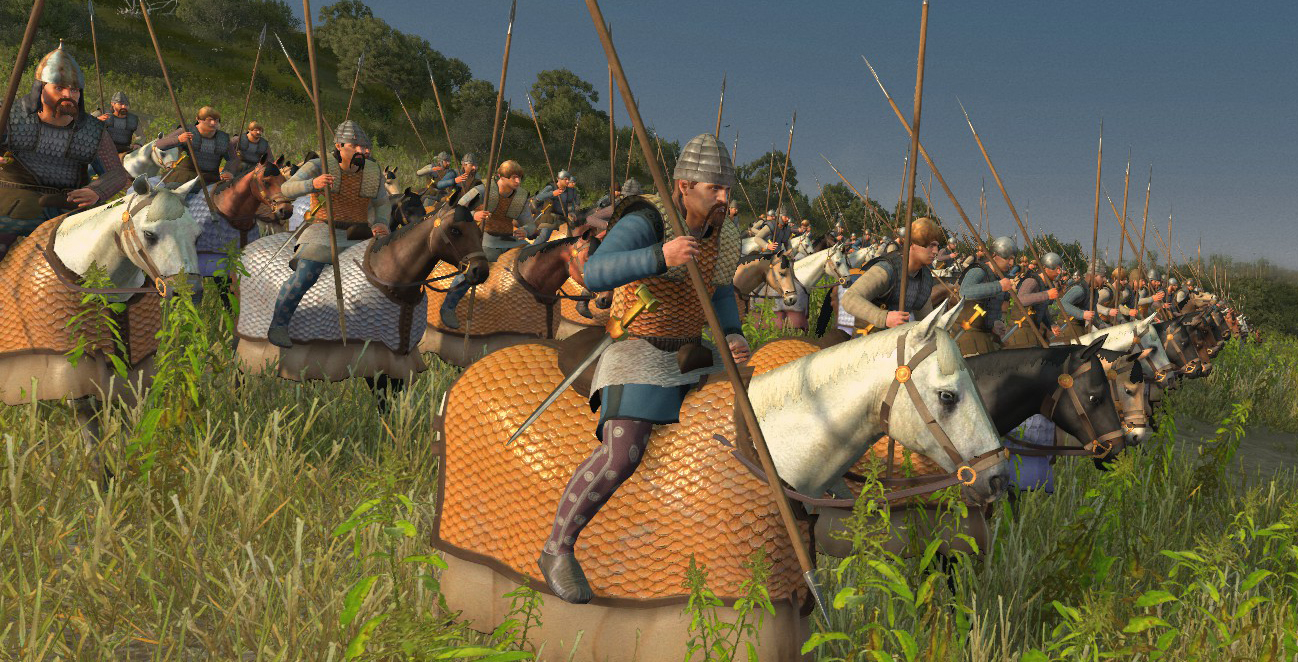
Sarmatian cataphract lancers
They seems to have been more agile and agressive riders than the Scythians they subjugated, and used a particular form of "light" cataphract, where both the rider and his mount were protected by a light leather-scales protection. South of the Caucasus, around Iran, and in the former territories of Alexander in Asia and Persia, dwelled the Parthians. They grew on the fringes of the Seleucid Empire and gradually took over most of it in the 1st Century BC, stretching from India to Asia Minor. One of the key success of this Empire was the Cataphract. They were mounted by nobles, and complemented by numerous horse-archers. Their chief tactic was to soften the enemy until it was disrupted enough for the cataphracts to charge and further disperse an enemy formation, allowing the horse archers to swwop in and pivk separated men one by one, with arrows, lances, javelins, while the heavier cataphracts could fight in melee with a lance, a sword or a mace. This did not prevented cataphract to use bows and arrows as well, with their lance strapped on their back, adding their own weight to the "rain" falling over the enemy.
Parthian cataphracts were heavily protected, with chainmail and scale armor, and sometimes a blend of plates and chainmail. Their helmet could be conical or rounded, and their face was also often protected, either by mail, or by a bronze or iron stylised mask. Their legs were also protected by leather "leg-bags" covered with scales. Their mount was also given a protective "mantle" of scale armor which could be more or less low above ground. For these reasons, the Parthian cataphracts of the time often were seen as invulnerable, veritable "tanks" of the antiquity.
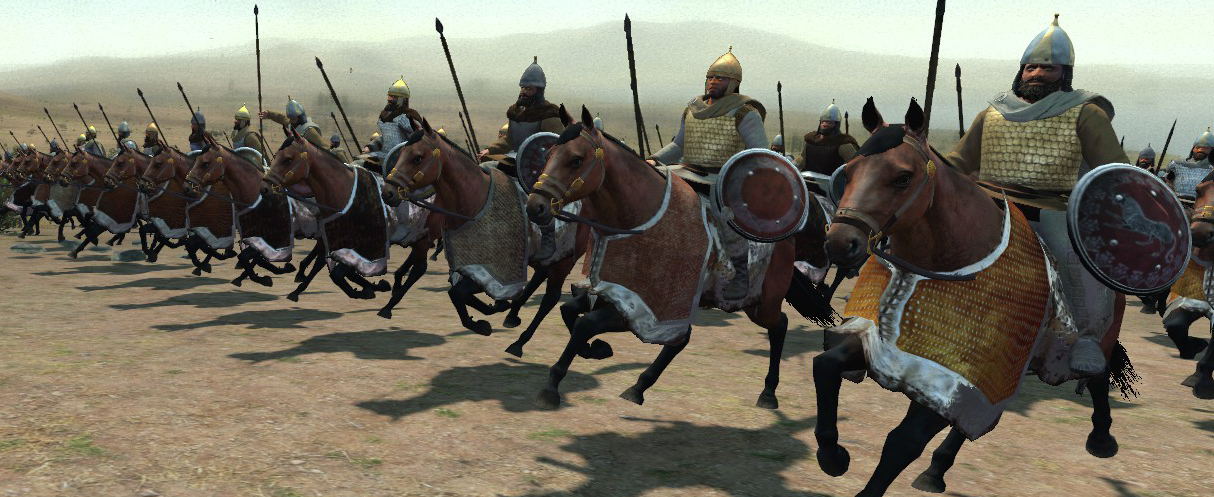
Armenian cataphracts
The most brillant feat they conducted ocurred at the battle of Carrhae, in 53 BC. After drawing the Roman legions of Crassus deep into Parthian territories, and despite it was a superior force, Parthian general Surena decisively defeated the Roman invasion force by using the same tactics described before. This was despite the discipline of the Romans, which were well protected but were ordered at times to chase off these cavalrymen, receiving a sudden "parthian shot" volley of arrow, devastating. The battle lasted for days until all Roman forces were defeated. Parthian Cataphract delivered the breakthrough and later the killing blow. They had less successes however at the battle of Tigranocerta with Lucullus against Tigranes the Great in 69 BC. Later in 38 BC, Publius Ventidius Bassus, used slingers to succesfully defeat the Parthians.

Seleucid cataphracts
Before this happened however, the Seleucids soon had to deaklt with the Parthian cataphracts on a daily basis, and adopted this kind of cavalry which took its Greek name or "Kataphraktoi". Apart hellenistic style helmets and gear, Seleucid cataphract were very similar to the Parthians. They were not however hugely popular due to limitations, showing poor tactical abilities against disciplined infantry and more mobile light cavalry.
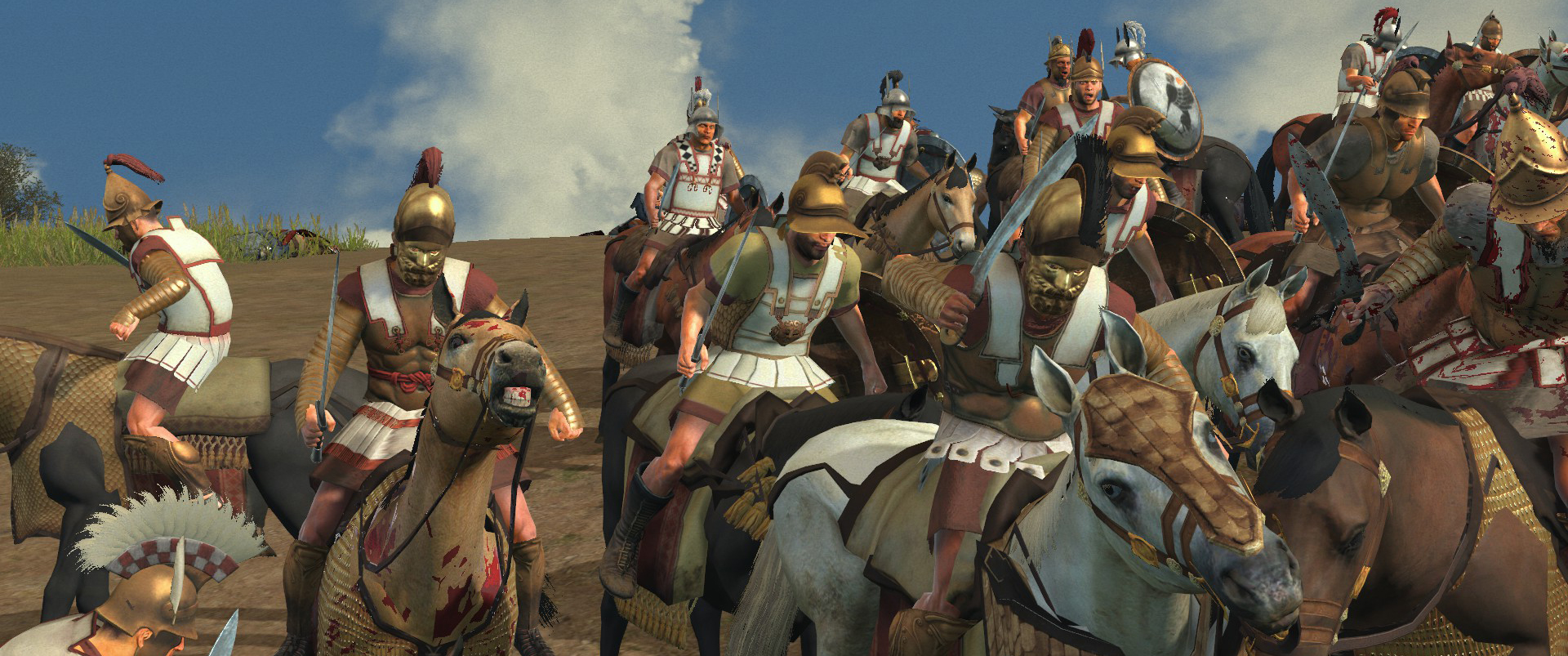
Seleucid cataphracts
Sassanid and Roman Cataphracts
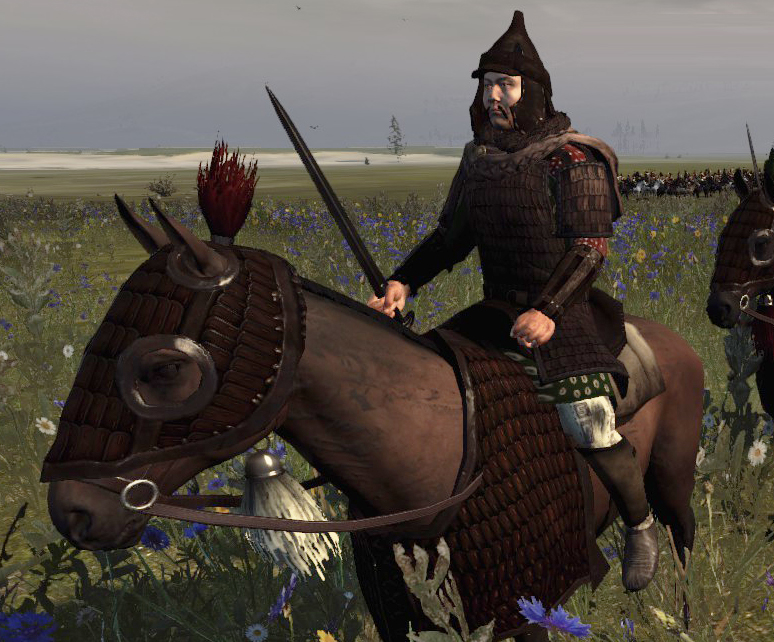
Late Imperial era cataphracts
Until the fall of Rome and in the medieval era, cataphtacts survived as the preferred form of heavy cavalry. The model was to be further developed in the west as the Knight cavalry. Indeed, when plate armor appeared it was not unusual to see horses also partially cladded with segments of plate armor. Way before that, the Roman Empire knew and appreciate the power of cataphracts and devised several types of heavy cavalry on their own, as the concept was further developed by the Byzantines. The Clibanarii and Catafractarii are the best examples, but also the Bucelarii. All were cataphracts, at least partially, use din different roles, lancers, melee fighters and horse archers. Mounted guards units also had well protected mounts such as the Excubitores.Opposite them were the even more feared Sassanid cavalry. The earliest known was the Grivpanvar, an old Persian name for "fully cladded".


Sassanid cavalry, depiction of Taq-e Bostan, Sassanian king Khosro II.
Sassanid Saravan
 This was the "basic" knighlty cavalry of the Sassanids. Called Asawaran (Azatan, or Azat in Armenia), this was a knightly caste, supported by a small estate. The Asawaran (Azatan) later simplified as Saravan formed the backbone of the heavy Sassanian cavalry. Given the fact the bodyguards numbered 1000, the total number of Cataphracts (partially or not) Saravan made a force perhaps 8,000 to 9,000 strong. This was to be mutipled again by twenty or more to fathom the entire horse archer cavalry force that can be mustered from all provinced in case of a war. Each Saravan ws accompanied by its own "sergeants" a well-equipped cavalry force, and lighter common horse archers from the estate.
This was the "basic" knighlty cavalry of the Sassanids. Called Asawaran (Azatan, or Azat in Armenia), this was a knightly caste, supported by a small estate. The Asawaran (Azatan) later simplified as Saravan formed the backbone of the heavy Sassanian cavalry. Given the fact the bodyguards numbered 1000, the total number of Cataphracts (partially or not) Saravan made a force perhaps 8,000 to 9,000 strong. This was to be mutipled again by twenty or more to fathom the entire horse archer cavalry force that can be mustered from all provinced in case of a war. Each Saravan ws accompanied by its own "sergeants" a well-equipped cavalry force, and lighter common horse archers from the estate.
Sassanid Pushtigban
The pushtigban were bodyguards, charged with the protection of the Persian Emperor. They were stationed at Ctesiphon picked-up from the ranks of veterans and the best of the Sassanid Savārān cavalry. This force was 1000 men string under the command of the pushtigban-salar. The pushtigban disappeared with the Muslim conquest of Persia.Sassanid Gian-Avspar
This was a sub-unit of Pushtigban translated as "sacrificers of their lives". They were "devotio" cataphract, and the best and most loyal among the pushtigban, so probably less than a hundred at all times. Pushtigban and the latter proved their worth during Julian's invasion of Persia in the 4th century AD. They protected the Spahbed, the generalissimo. Derived from the old Persian form spādhapati they were common to Media Atropatene, the Parthians, and later the Sassanians.Sassanid Zhayedan
A mounted form of the old persian "immortals", which numbered 10,000 at all times, with reserves. They were anothr form of cataphract, with the rider particularly well protected, including a steel breastplate. They were efficient with a variety of weapons, cane bow, mace, axe, sword, javelins and pike. It is likely they carried all and changed tactics as the situation evolved.Clibanarii and Catafractarii
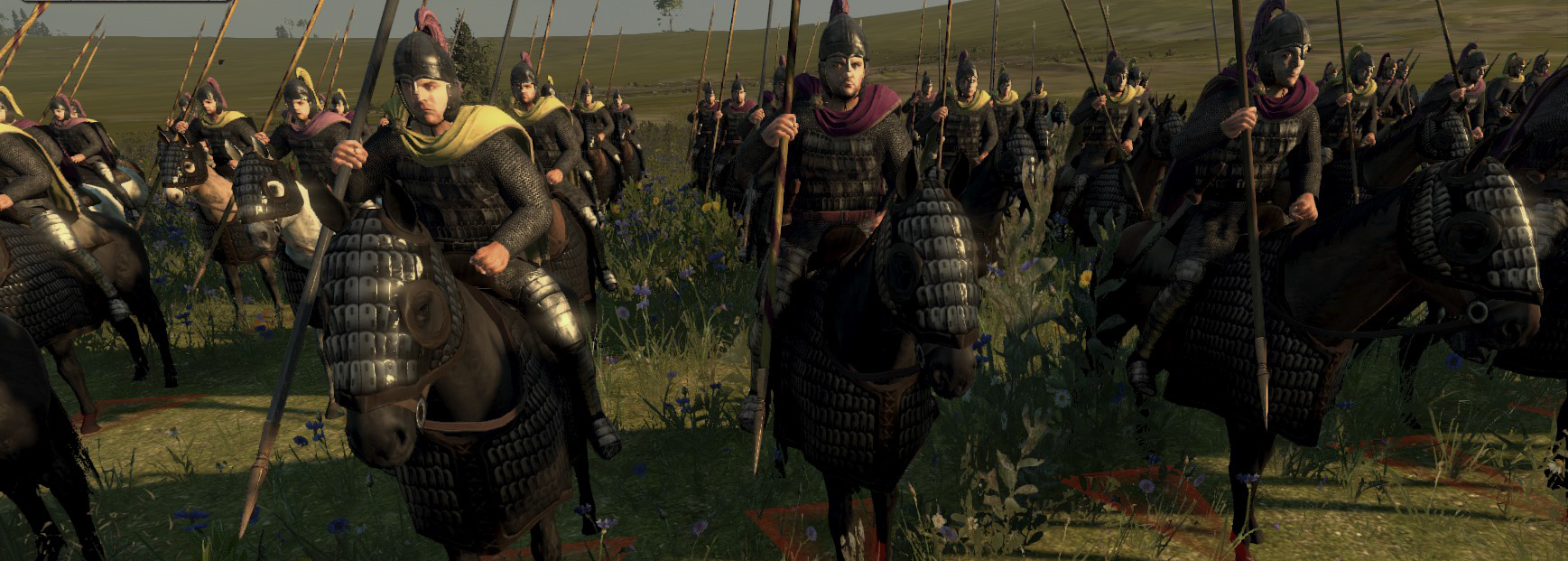
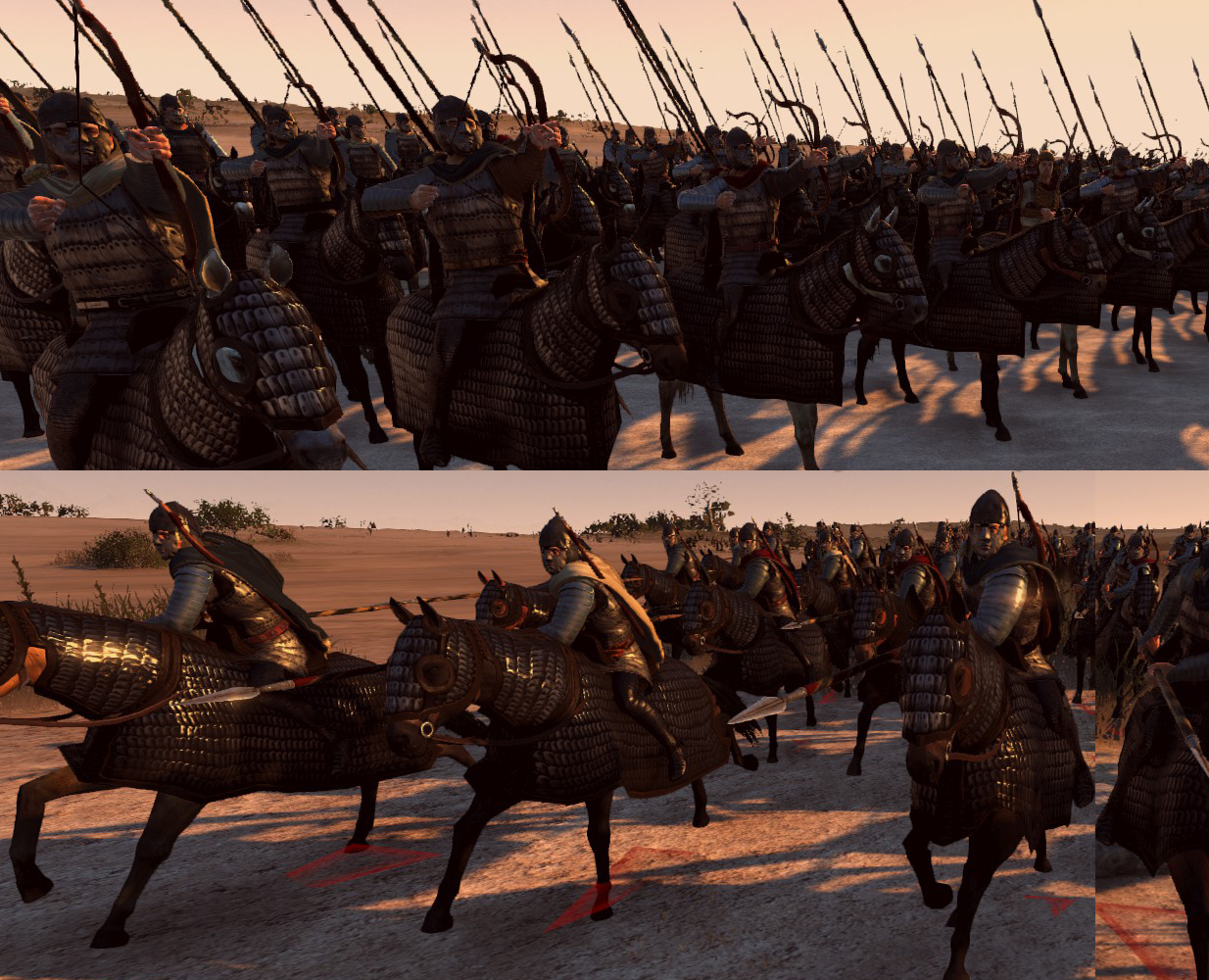
Bucelarii
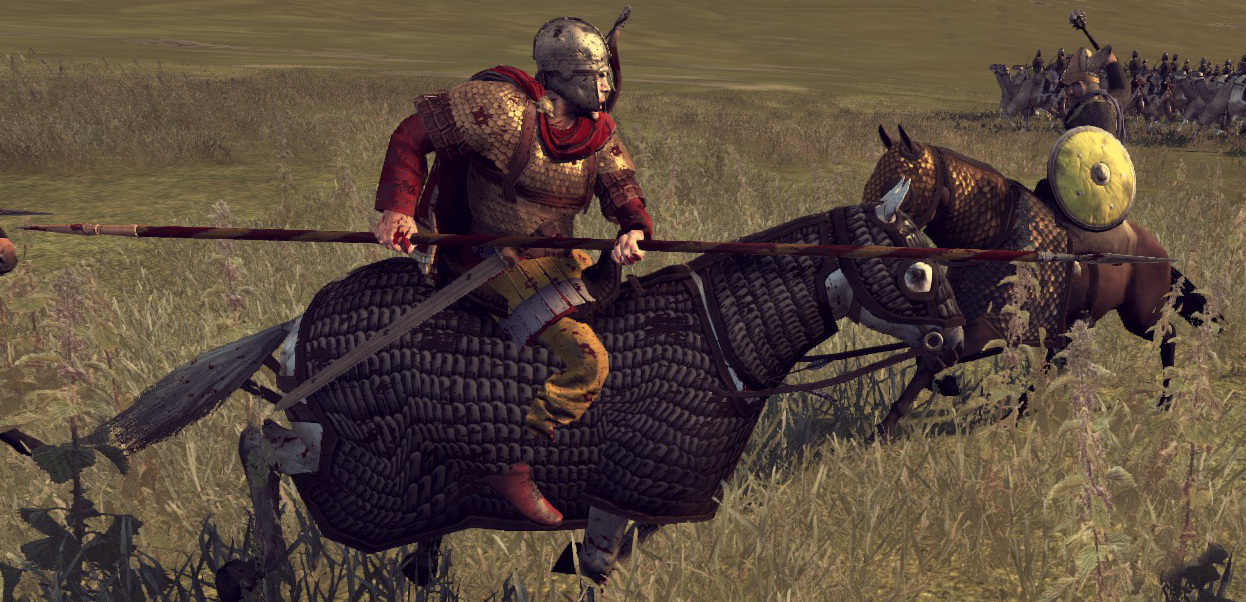
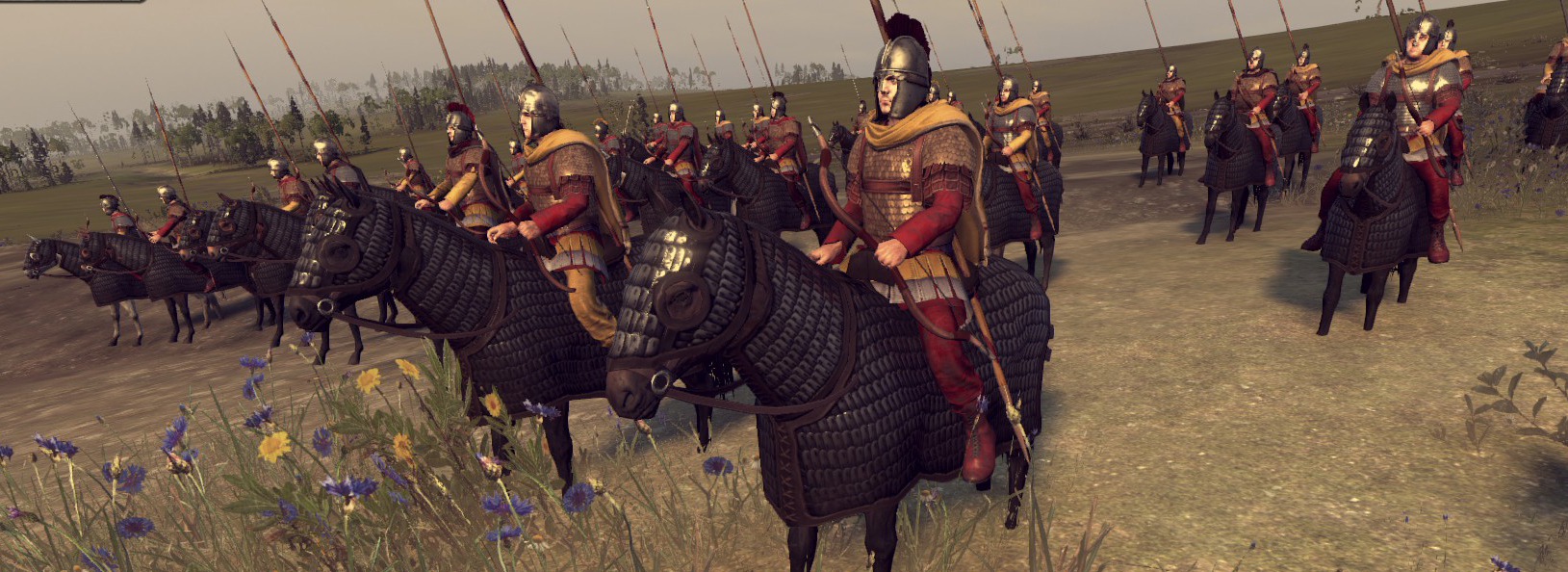
Continuation
Both the Arabs (whhich defeated the Sassanians) and the Byzantines inherited frm this cataphract tradition. The first soon incorporated slave warriors later called the Ghulam. The Byzantine developed further cataphracts and this influence spread to the Western world was well. Around 700 BC Charlemagne armies comprised a heavily protected cavalry called the Scolae. They afforded their own equipments. Around 800 BC appeared the knight in Western Europe.Sources/Read More
Wheeler's depiction of Sassanid cataphracts♕ Aquitani & Vasci ♕ Celts ♕ Indo-greeks ♕ Veneti ♕ Yuezhi ♕ Indians ♕ Etruscans ♕ Numidians ♕ Samnites ♕ Judaean ♕ Ancient Chinese ♕ Corsico-Sardinians
⚔ Cingetos ⚔ Immortals ⚔ Cavaros ⚔ Cataphract ⚔ Romphaiorioi ⚔ Chalkaspidai ⚔ Devotio Warrior ⚔ Scythian Horse archer ⚔ The Ambactos ⚔ Iberian warfare ⚔ Illyrian warriors ⚔ Germanic spearmen ⚔ Carthaginian Hoplite ⚔ Thracian Peltast ⚔ Caetrati ⚔ Ensiferi ⚔ Hippakontistai ⚔ Hastati ⚔ Gaesatae ⚔ Cretan Archer ⚔ Thorakitai ⚔ Soldurii ⚔ Iphikrates ⚔ Kardaka ⚔ The thureophoroi